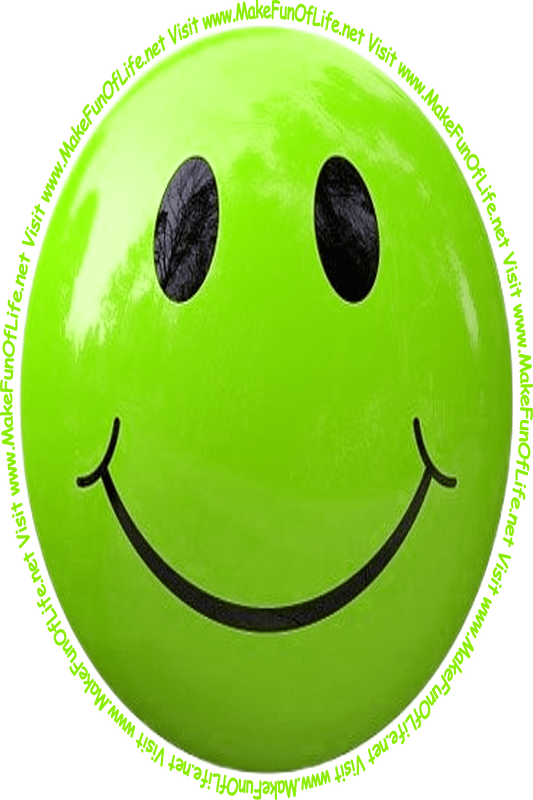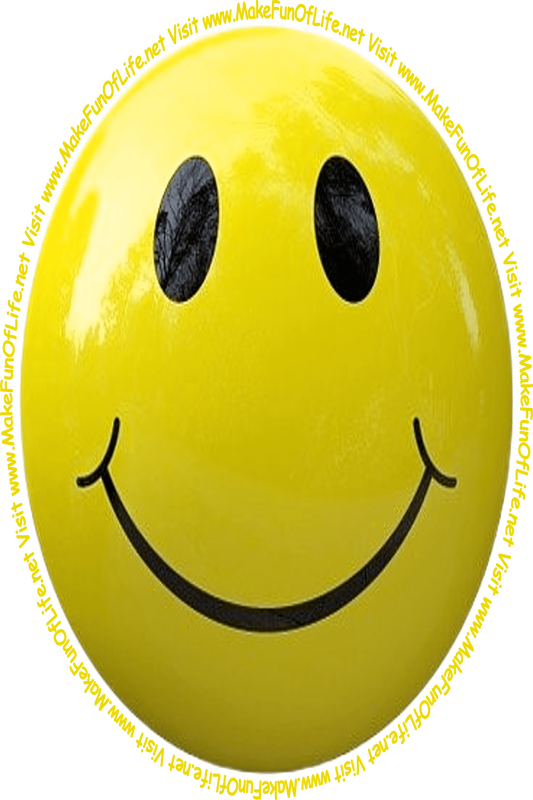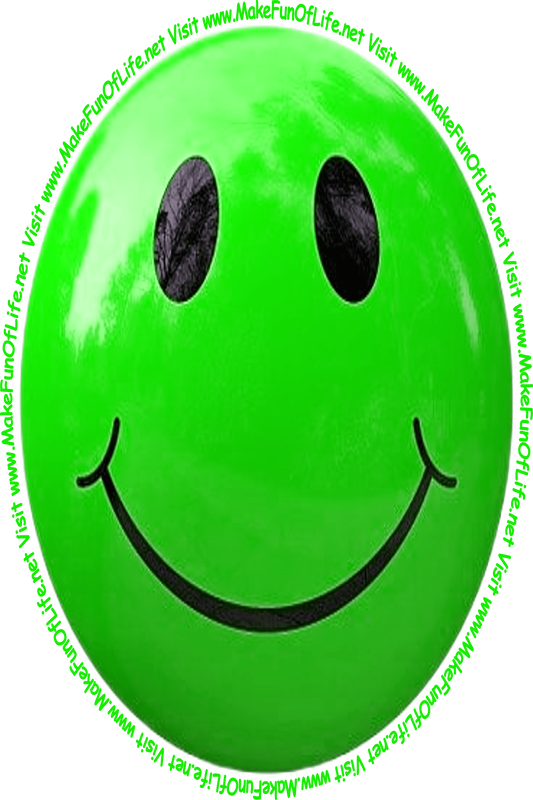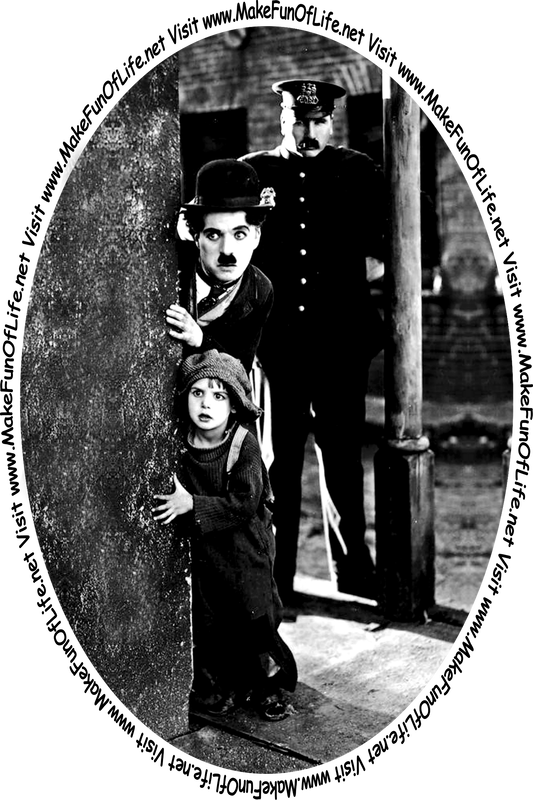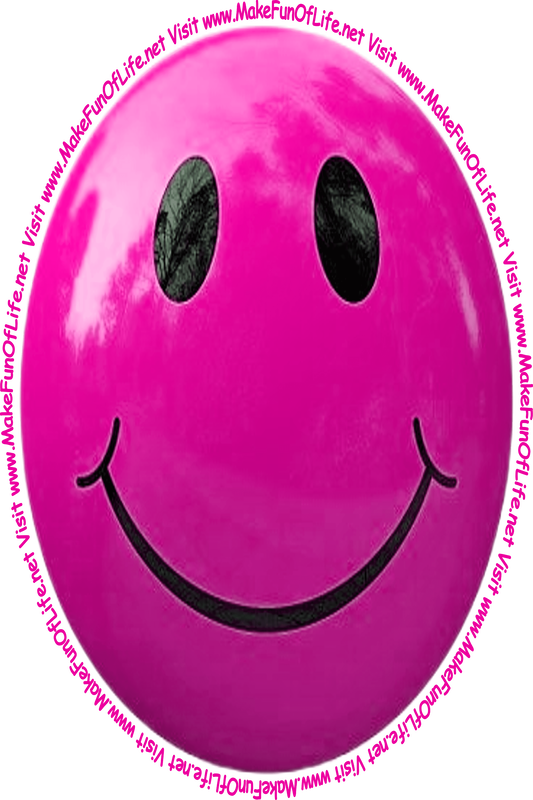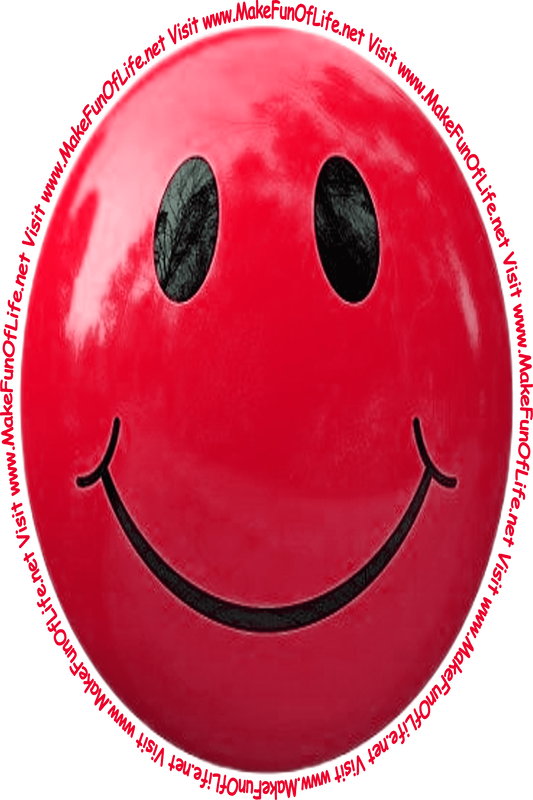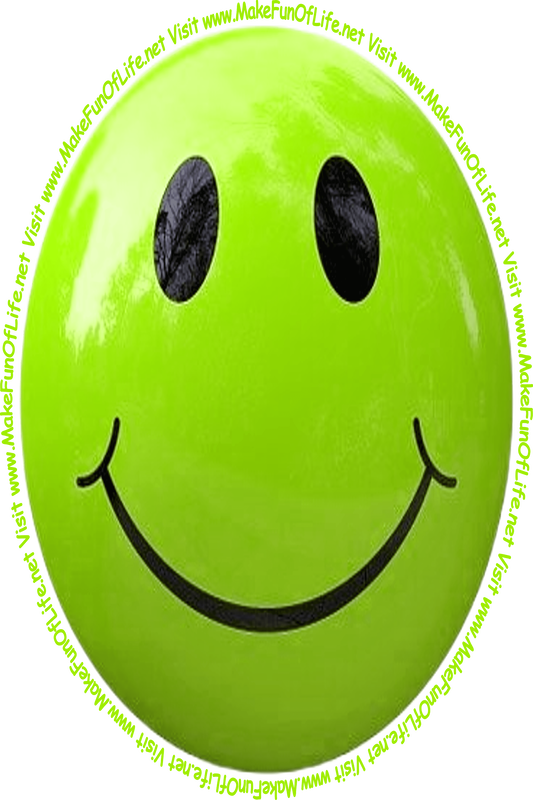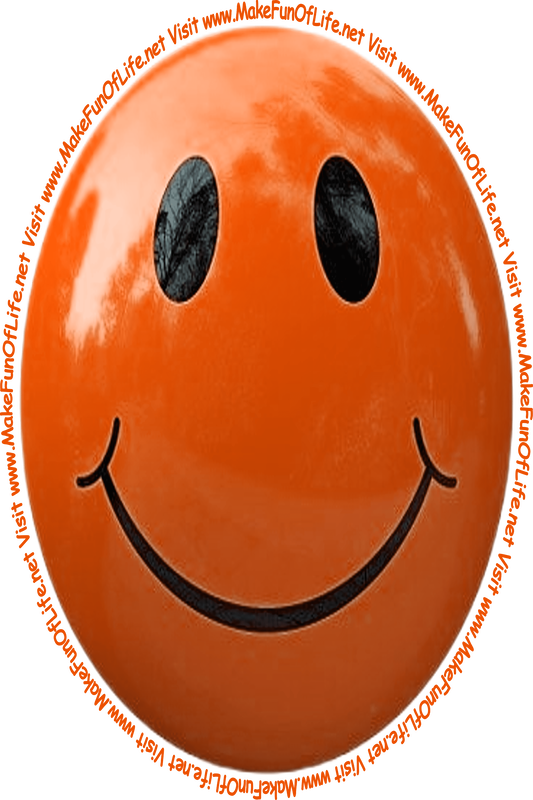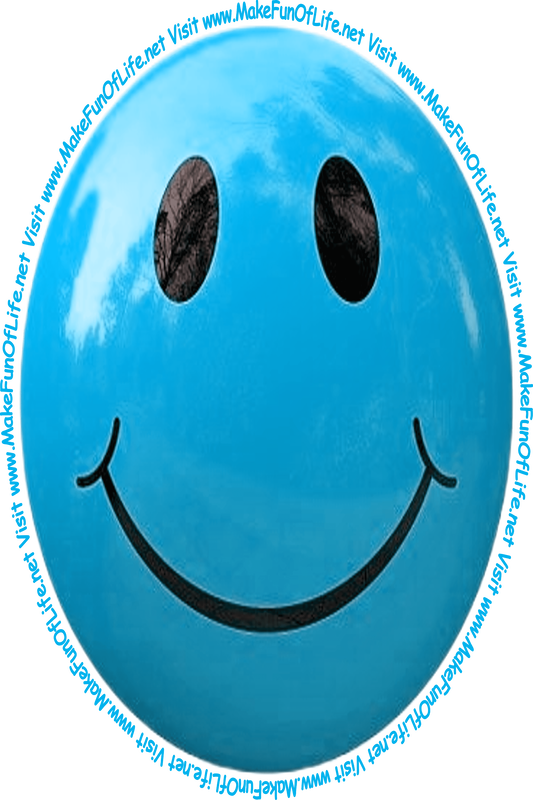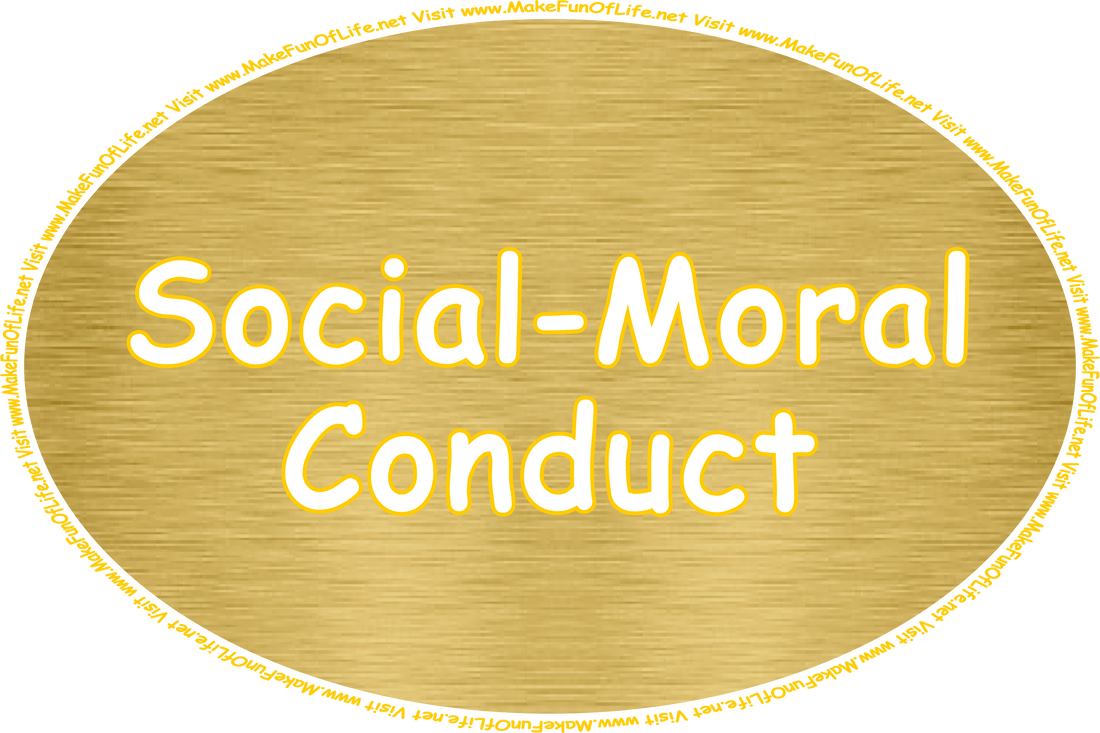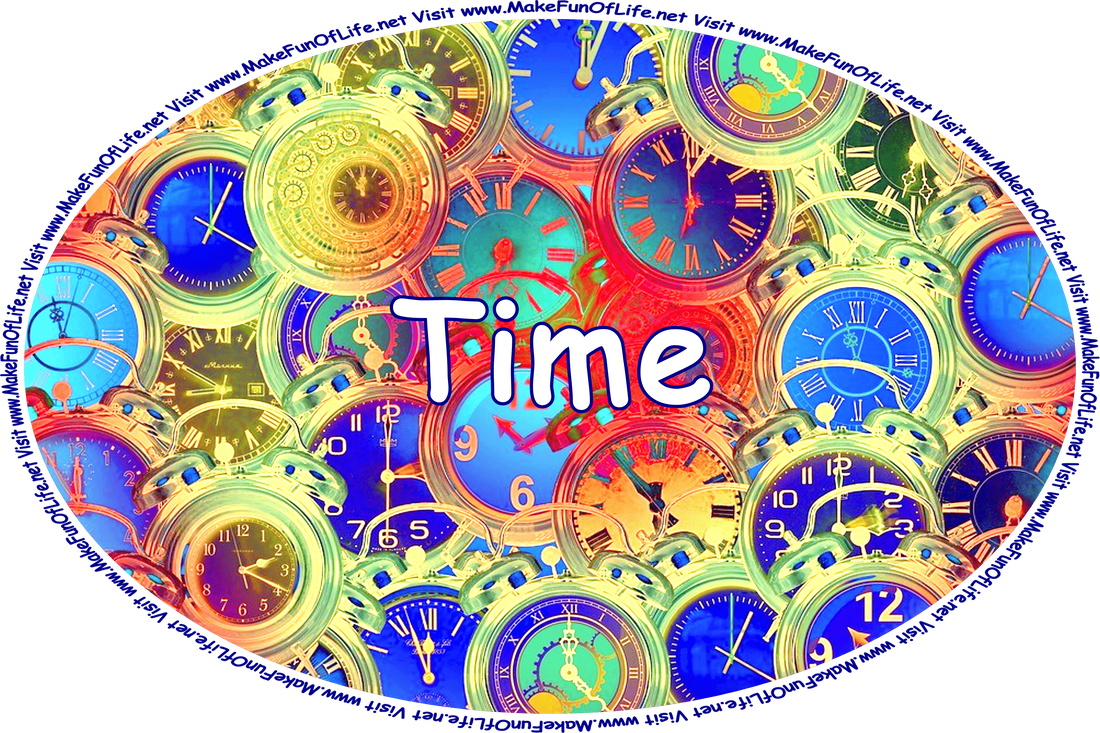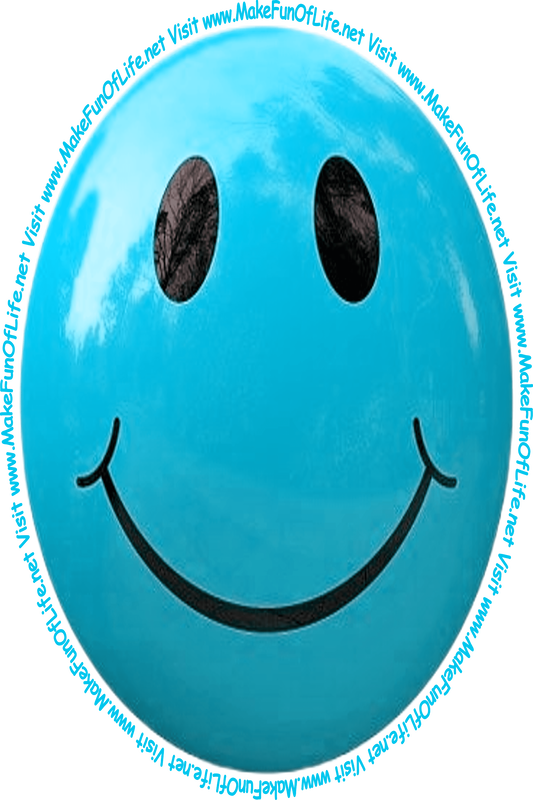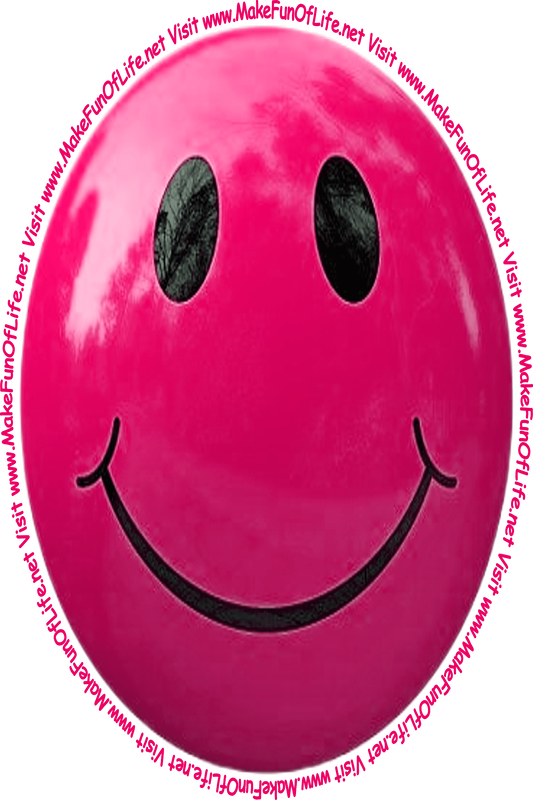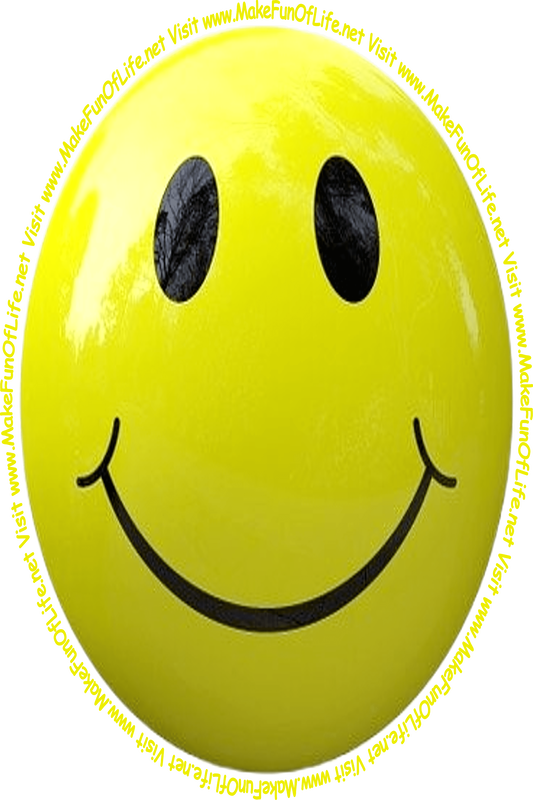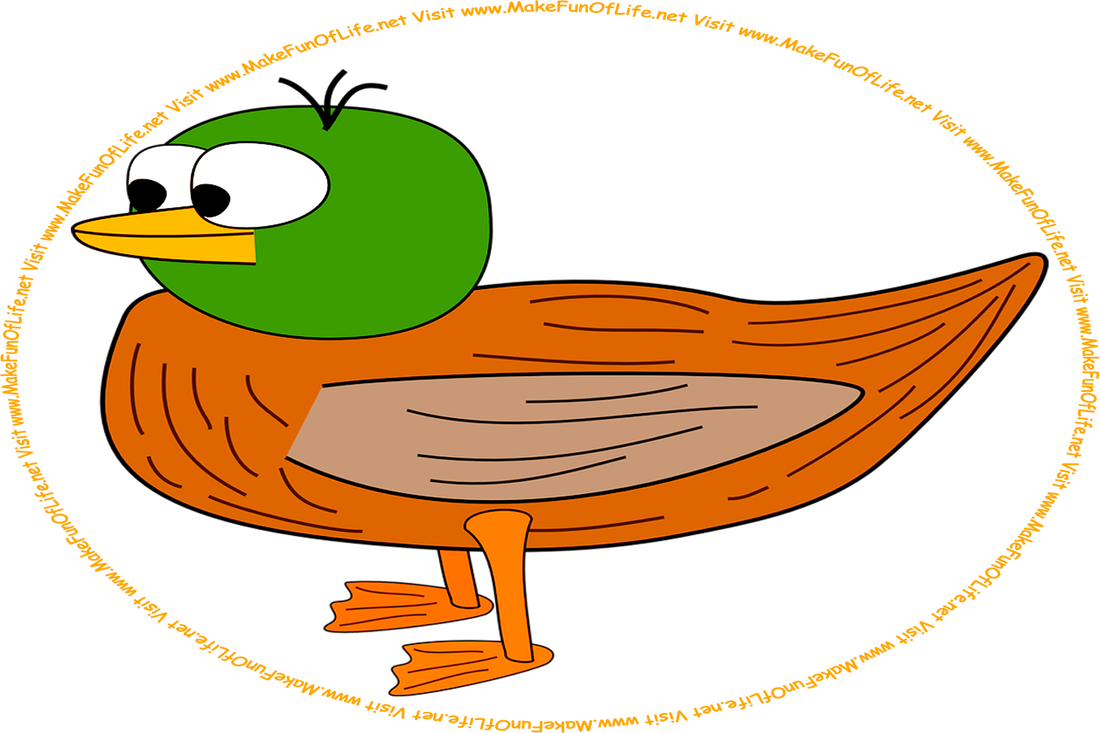“The way we dress affects the way we think, the way we feel, the way we act, and the way others react to us.” -Judith Rasband
“Dress as if you have made something of yourself in the world, even if you have not.” -Author Unknown
“Never wear anything that panics the cat.” -P. J. O’Rourke (Patrick Jake O’Rourke (born 1947))
“Your shoes have to match your belt. That’s rule number one for guys. You can’t put the brown shoes with the black belt. Or a brown belt with a black wristwatch. Just don’t do it! Also, I don’t like boots with suits. And when you wear sneakers, make sure they go with your shirt.” -Ashton Kutcher (Christopher Ashton Kutcher (born 1978))
Riddle: What has two legs but cannot run?
Solution: A pair of trousers.
“Successful dress is really no more than achieving good taste and the look of the upper middle class.” -John T. Molloy (born 1937): “Dress for Success” (1975)
What do your clothes and other articles you wear or carry say about you? Do they accurately tell people who you really are? Are they giving people the wrong impression or the right impression, insofar as how you wish to be regarded?
One of the oldest pieces of women’s clothing discovered to date is a skirt similar to a Pacific-islander grass skirt, with bronze ornaments on the lower edge that would have jingled when its wearer walked or danced. Was it an article of clothing or a musical instrument?
“When in doubt, wear red.” -Bill Blass (William Ralph ‘Bill’ Blass (1922 - 2002))
“The well-dressed man never stands out in a crowd; his elegance sets him apart.” -Oscar de la Renta (pseudonym of Óscar Arístides Renta Fiallo (1932 - 2014))
Andy: Why were the suspenders sent to jail?
Barney: For holding up a pair of trousers.
“A well-dressed man is the best accessory a woman can have.” -Coco Chanel (Gabrielle Bonheur ‘Coco’ Chanel (1883 - 1971))
“If you are a dog and your owner suggests that you wear a sweater . . . suggest that he wear a tail.” -Fran Lebowitz (Frances Ann ‘Fran’ Lebowitz (born 1950))
Jesse: Why are you wearing that fur coat?
Bessie: To stay warm, that’s what fur!
Animal hides and furs were one of the first types of clothing humans wore, and they continue to be worn even now for their warmth in areas that have extremely cold climates. However, in most places today, wearing fur is regarded as a luxury and has been made increasingly socially unacceptable through the efforts of animal rights activists.
“No one in the world needs a mink coat but a mink.” -Murray Banks (1917 - 2008)
“If you look good and dress well, you don’t need a purpose in life.” -Robert Pante
Until the mid-Middle Ages, clothes were usually fastened with ties (short lengths of rawhide or other material), beads-and-loops, or toggles. Lacing similar to the kind now used on shoes was still favored on clothes until the late 1600’s, as the best way to create a fit that could grow or shrink with one’s figure, during those times of alternating feast and famine. The first buttons as we recognize them appeared on clothes in the Middle Ages as a form of decoration. Zippers and Velcro would appear only much later in history.
“People seldom notice old clothes if you wear a big smile.” -Author Unknown
The YKK seen on most zippers stands for Yoshida Kogyo Kabushikkaisha, which roughly translates as the Yoshida Company Limited. Founded in 1934, YKK is the most widely-recognized zipper maker in the world.
Overheard: Amazing - you just hang something in your closet for a while, and it shrinks two sizes!
Old Person of Brill
There was an old person of Brill,
Who purchased a shirt with a frill;
But they said, “Don’t you wish,
You mayn’t look like a fish,
You obsequious old person of Brill?”
by Edward Lear (1812 - 1888)
The clingy material Velcro was inspired by Burdock seeds, which have soft stickers that cling to clothing.
Not long ago, most people wore clothing made at home, usually of wool, linen, or less commonly, cotton. First, animal or plant fibers had to be spun into long pieces of thread, and then the thread had to be woven into cloth. The fabric was either left in its natural color or colored with dyes made from plants.
“The best-dressed woman is one whose clothes wouldn’t look too strange in the country.” -Hardy Amies (Edwin Hardy Amies (1909 - 2003))
“Dressing well is a form of good manners.” -Tom Ford
During the 1860’s, dresses were so wide that women often found themselves stuck while trying to get through doorways. But women alone cannot be blamed for this silliness, because historically and right up to the present time, both men and women have been fashion designers and dressmakers.
“Fashions have done more harm than revolutions.” -Victor Hugo (Victor Marie Hugo (1802 - 1885))
“To me, clothing is a form of self-expression - there are hints about who you are in what you wear.” -Marc Jacobs (born 1963)
Nothing to Wear
Dresses for breakfasts, and dinners, and balls;
Dresses to sit in, and stand in, and walk in;
Dresses to dance in, and flirt in, and talk in;
Dresses in which to do nothing at all;
Dresses for Winter, Spring, Summer, and Fall.
by William Allen Butler (1825 - 1902)
The invention of the automobile and the bicycle had a noticeable influence on women’s fashions. In the 1900’s, skirts became shorter to enable women to step into automobiles and climb onto bicycles more easily.
“There’s no such thing as a designer of menswear - it’s only history. The suit around the world is based on the English suit, which began in about 1670.” -Hardy Amies (Edwin Hardy Amies (1909 - 2003))
“Fashions fade, style is eternal.” -Yves Saint-Laurent (Yves Henri Donat Mathieu-Saint-Laurent (1936 - 2008))
By law, in Carmel, New York, United States of America, men are not allowed to go outside while wearing a jacket and pants that do not match.
“When you can’t do something truly useful, you tend to vent the pent up energy in something useless but available, like snappy dressing.” -Lois McMaster Bujold (born 1949)
“My dad’s pants kept creeping up on him. By sixty-five, he was just a pair of pants and a head.” -Jeff Altman (born 1951)
Sharp Dresser
I once had a cousin named Bruce
Whose clothing was always quite spruce.
To people who stared
He frankly declared
“Without them, I’d be a recluse.”
by Author Unknown
Harry S Truman was a haberdasher before becoming an American President. In partnership with his old Army buddy Edward Jacobson, he owned the Truman & Jacobson haberdashery at 104 West 12th Street in Kansas City, Kansas, United States of America. The pair started selling suits and accessories for gentlemen on 28 November 1919, and continued in the business until the Great Depression of the 1930’s forced them out of business.
“I often take a brand-new suit or hat and throw it up against the wall a few times to get that stiff, square newness out of it.” -Fred Astaire (pseudonym of Frederick Austerlitz (1899 - 1987))
The wasting moth ne’er spoil’d my best array;
The cause was this: I wore it every day.
-Alexander Pope (1688 - 1744)
“Over the years I have learned that what is important in a dress is the woman who is wearing it.” -Yves Saint-Laurent (Yves Henri Donat Mathieu-Saint-Laurent (1936 - 2008))
Khakis: What you need to start a car in Boston.
Women’s trousers, including pants and slacks and jeans, as worn now, were not regarded as acceptable for wearing in public until the Second World War. It was during the war that women began to do work that had formerly been done more commonly by men. Able-bodied men had been sent off to distant battlefields, and with a shortage of men to do work, manufacturers, businesses, farmers, and even the government began hiring women workers in their place. Before that time, women usually wore dresses or skirts with blouses, and worked in the home.
“Don’t get your knickers in a knot. Nothing is solved and it just makes you walk funny.” -Kathryn Carpenter
An increased emphasis on youth culture began in America during the 1950’s. Clothing styles started to lean toward the younger folks. The poodle skirt, which is a circle skirt having an embroidered dog and leash on the front, became fashionable. Who says we can’t put a bit of whimsy into our attire?
Jeans are trousers made from a heavy cotton fabric called denim. ‘Denim’ was originally called ‘serge de Nîmes,’ and came from the French seaside manufacturing town of Nîmes starting in the late 17th century. Over time, ‘de Nîmes’ was shortened to ‘denim.’ Jeans themselves were named after Genoan sailors from Genoa, Italy, who were locally known as ‘Genes,’ and who wore the material as clothing. Jeans were further developed as heavy-duty work trousers in the 1870’s by Levi Strauss, in California, United States of America. Levi’s jeans were originally dyed brown, but later were dyed the now-familiar blue color. Because all jeans are made from denim cloth, the term ‘denim jeans’ is redundant. One bale of cotton can be made into as many as 215 pairs of jeans.
“I have jeans with holes in them and I have nice jeans. I have casual and I have dressy jeans. I’ve got all kinds.” -Amanda Seyfried (Amanda Michelle Seyfried (born 1985))
Bell-bottom trousers were first worn by navy sailors, and were introduced to the fashion world by the hippies, with widespread popularity following soon thereafter. Also known as ‘flared’ pants, bell-bottoms are a garment associated with the societal trends of the 1960’s and 1970’s. They are a clothing article that many people still consider as an essential item in women’s wardrobes, and can even be paired with blouses that have flared sleeves and platform shoes to complete the hip flower-child look.
“Sweater: Garment worn by a child when his mother is feeling chilly.” -Ambrose Bierce (Ambrose Gwinnett Bierce (1842 - 1914))
“You should never wear your best trousers when you go out to fight for freedom and truth.” -Henrik Ibsen (Henrik Johan ‘Henrik’ Ibsen (1828 - 1906)): “An Enemy of the People” (1882), act 5
“Of all the things you wear, your expression is the most important.” -Janet Lane (Janet Lane-Claypon (1877 -1967))
Business people wear uniforms, though they may not think of what they wear as being such. They usually have greater leeway in choices of colors and patterns and styles and in choosing where to buy their clothes. Uniforms rules for business people are either stated openly in employee manuals and by workplace supervisors, or individual business people are expected to arrive at their own understanding of how to dress based on their own observations of other business people.
“With an evening coat and a white tie, anybody, even a stockbroker, can gain a reputation for being civilized.” -Oscar Wilde (Oscar Fingal O’Flahertie Wills Wilde (1854 - 1900))
Women’s clothes have buttons on the left side, while men’s clothes have buttons on the right side. When buttons were invented, they were expensive and worn primarily by the rich. Because women were dressed by maids or servants, and because most people are right-handed, dressmakers placed the buttons where they would be easily reached. Men’s clothes had the button on the right, because they tended to dress themselves. Additionally, as men’s and women’s clothing became more similar and was mass produced and mass marketed, some type of way to easily tell men’s and women’s clothing apart was needed.
“It is difficult to see why lace should be so expensive, it is mostly holes.” -Mary Wilson Little (possibly born about 1880)
Fond pride of dress is sure a very curse;
Ere fancy you consult, consult your purse.
-Author Unknown
Overheard: I’ve been shopping all my life and still have nothing to wear!
Frank: Do you have holes in your clothes?
Ernest: No, of course not.
Frank: Then how do you get them on?
Evelyn: I think the clothes dryer must have shrunk my blouse. The collar is so tight that I can hardly breathe.
Daniel: Don’t be silly; you have put your head through the buttonhole.
“Dress like you are already the successful person you hope to become.” -David Hugh Beaumont (born 1966)
“I wear V-neck shirts. I can’t wear a regular neck shirt, it hurts. And I especially hate turtlenecks. Wearing a turtleneck is like being strangled by a really weak guy all day.” -Mitch Hedberg (1968 - 2005)
“Labels on garments stating ‘One Size Fits All’ or even One Size Fits Most’ are a very un-funny joke that has been played on all of us for far too long - is there a lawyer somewhere out there who is willing to defend us against this kind of false advertising?” -David Hugh Beaumont (born 1966)
Knock, knock.
Who’s there?
Euripides.
Euripides, who?
Euripides pants and you won’t get another pair!
“Know first who you are; and then adorn yourself accordingly.” -Euripides (480 B.C.E. - 406 B.C.E.)
“Nothing else you can wear will ever make you feel as warm as a wedding band.” -Marilyn vos Savant (born 1946): “Ask Marilyn” (25 September 2005)
“Dress shabbily and they remember the dress, dress impeccably and they remember the woman.” -Coco Chanel (Gabrielle Bonheur ‘Coco’ Chanel (1883 - 1971))
Joshua: Why was the well-dressed man picked for the job?
Ezekiel: He was ‘best-suited’ for it.
Marie de Medici, a member of that famous Italian family and a 17th-century queen of France, had expensive tastes in clothes. One of her dresses was outfitted with 39,000 tiny pearls and 3,000 diamonds, and cost the equivalent of $20 million at the time it was made, in 1606. She wore it just once.
“She wears her clothes as if they had been thrown on her with a pitchfork.” -Jonathan Swift (1667 - 1745)
“You’re never fully dressed without a smile.” -Martin Charnin (born 1934)
“Dress for success. Image is very important. People judge you by the way you look on the outside.” -Brian Tracy (born 1944)
Question: What did the shoe say to the hat?
Answer: You go ‘on a-head,’ and I‘ll follow you ‘on foot.’
“What belts do is finish a look. Whether you’re wearing pants, jeans, a dress or skirt, a belt gives the outfit a finishing touch. It’s polished.” -Julie Helman
“Good clothes open all doors.” -Thomas Fuller (1654 - 1734)
You will always look simply smashing in properly chosen garments . . . much more to learn is coming up next . . . on MFOL!
“Dress as if you have made something of yourself in the world, even if you have not.” -Author Unknown
“Never wear anything that panics the cat.” -P. J. O’Rourke (Patrick Jake O’Rourke (born 1947))
“Your shoes have to match your belt. That’s rule number one for guys. You can’t put the brown shoes with the black belt. Or a brown belt with a black wristwatch. Just don’t do it! Also, I don’t like boots with suits. And when you wear sneakers, make sure they go with your shirt.” -Ashton Kutcher (Christopher Ashton Kutcher (born 1978))
Riddle: What has two legs but cannot run?
Solution: A pair of trousers.
“Successful dress is really no more than achieving good taste and the look of the upper middle class.” -John T. Molloy (born 1937): “Dress for Success” (1975)
What do your clothes and other articles you wear or carry say about you? Do they accurately tell people who you really are? Are they giving people the wrong impression or the right impression, insofar as how you wish to be regarded?
One of the oldest pieces of women’s clothing discovered to date is a skirt similar to a Pacific-islander grass skirt, with bronze ornaments on the lower edge that would have jingled when its wearer walked or danced. Was it an article of clothing or a musical instrument?
“When in doubt, wear red.” -Bill Blass (William Ralph ‘Bill’ Blass (1922 - 2002))
“The well-dressed man never stands out in a crowd; his elegance sets him apart.” -Oscar de la Renta (pseudonym of Óscar Arístides Renta Fiallo (1932 - 2014))
Andy: Why were the suspenders sent to jail?
Barney: For holding up a pair of trousers.
“A well-dressed man is the best accessory a woman can have.” -Coco Chanel (Gabrielle Bonheur ‘Coco’ Chanel (1883 - 1971))
“If you are a dog and your owner suggests that you wear a sweater . . . suggest that he wear a tail.” -Fran Lebowitz (Frances Ann ‘Fran’ Lebowitz (born 1950))
Jesse: Why are you wearing that fur coat?
Bessie: To stay warm, that’s what fur!
Animal hides and furs were one of the first types of clothing humans wore, and they continue to be worn even now for their warmth in areas that have extremely cold climates. However, in most places today, wearing fur is regarded as a luxury and has been made increasingly socially unacceptable through the efforts of animal rights activists.
“No one in the world needs a mink coat but a mink.” -Murray Banks (1917 - 2008)
“If you look good and dress well, you don’t need a purpose in life.” -Robert Pante
Until the mid-Middle Ages, clothes were usually fastened with ties (short lengths of rawhide or other material), beads-and-loops, or toggles. Lacing similar to the kind now used on shoes was still favored on clothes until the late 1600’s, as the best way to create a fit that could grow or shrink with one’s figure, during those times of alternating feast and famine. The first buttons as we recognize them appeared on clothes in the Middle Ages as a form of decoration. Zippers and Velcro would appear only much later in history.
“People seldom notice old clothes if you wear a big smile.” -Author Unknown
The YKK seen on most zippers stands for Yoshida Kogyo Kabushikkaisha, which roughly translates as the Yoshida Company Limited. Founded in 1934, YKK is the most widely-recognized zipper maker in the world.
Overheard: Amazing - you just hang something in your closet for a while, and it shrinks two sizes!
Old Person of Brill
There was an old person of Brill,
Who purchased a shirt with a frill;
But they said, “Don’t you wish,
You mayn’t look like a fish,
You obsequious old person of Brill?”
by Edward Lear (1812 - 1888)
The clingy material Velcro was inspired by Burdock seeds, which have soft stickers that cling to clothing.
Not long ago, most people wore clothing made at home, usually of wool, linen, or less commonly, cotton. First, animal or plant fibers had to be spun into long pieces of thread, and then the thread had to be woven into cloth. The fabric was either left in its natural color or colored with dyes made from plants.
“The best-dressed woman is one whose clothes wouldn’t look too strange in the country.” -Hardy Amies (Edwin Hardy Amies (1909 - 2003))
“Dressing well is a form of good manners.” -Tom Ford
During the 1860’s, dresses were so wide that women often found themselves stuck while trying to get through doorways. But women alone cannot be blamed for this silliness, because historically and right up to the present time, both men and women have been fashion designers and dressmakers.
“Fashions have done more harm than revolutions.” -Victor Hugo (Victor Marie Hugo (1802 - 1885))
“To me, clothing is a form of self-expression - there are hints about who you are in what you wear.” -Marc Jacobs (born 1963)
Nothing to Wear
Dresses for breakfasts, and dinners, and balls;
Dresses to sit in, and stand in, and walk in;
Dresses to dance in, and flirt in, and talk in;
Dresses in which to do nothing at all;
Dresses for Winter, Spring, Summer, and Fall.
by William Allen Butler (1825 - 1902)
The invention of the automobile and the bicycle had a noticeable influence on women’s fashions. In the 1900’s, skirts became shorter to enable women to step into automobiles and climb onto bicycles more easily.
“There’s no such thing as a designer of menswear - it’s only history. The suit around the world is based on the English suit, which began in about 1670.” -Hardy Amies (Edwin Hardy Amies (1909 - 2003))
“Fashions fade, style is eternal.” -Yves Saint-Laurent (Yves Henri Donat Mathieu-Saint-Laurent (1936 - 2008))
By law, in Carmel, New York, United States of America, men are not allowed to go outside while wearing a jacket and pants that do not match.
“When you can’t do something truly useful, you tend to vent the pent up energy in something useless but available, like snappy dressing.” -Lois McMaster Bujold (born 1949)
“My dad’s pants kept creeping up on him. By sixty-five, he was just a pair of pants and a head.” -Jeff Altman (born 1951)
Sharp Dresser
I once had a cousin named Bruce
Whose clothing was always quite spruce.
To people who stared
He frankly declared
“Without them, I’d be a recluse.”
by Author Unknown
Harry S Truman was a haberdasher before becoming an American President. In partnership with his old Army buddy Edward Jacobson, he owned the Truman & Jacobson haberdashery at 104 West 12th Street in Kansas City, Kansas, United States of America. The pair started selling suits and accessories for gentlemen on 28 November 1919, and continued in the business until the Great Depression of the 1930’s forced them out of business.
“I often take a brand-new suit or hat and throw it up against the wall a few times to get that stiff, square newness out of it.” -Fred Astaire (pseudonym of Frederick Austerlitz (1899 - 1987))
The wasting moth ne’er spoil’d my best array;
The cause was this: I wore it every day.
-Alexander Pope (1688 - 1744)
“Over the years I have learned that what is important in a dress is the woman who is wearing it.” -Yves Saint-Laurent (Yves Henri Donat Mathieu-Saint-Laurent (1936 - 2008))
Khakis: What you need to start a car in Boston.
Women’s trousers, including pants and slacks and jeans, as worn now, were not regarded as acceptable for wearing in public until the Second World War. It was during the war that women began to do work that had formerly been done more commonly by men. Able-bodied men had been sent off to distant battlefields, and with a shortage of men to do work, manufacturers, businesses, farmers, and even the government began hiring women workers in their place. Before that time, women usually wore dresses or skirts with blouses, and worked in the home.
“Don’t get your knickers in a knot. Nothing is solved and it just makes you walk funny.” -Kathryn Carpenter
An increased emphasis on youth culture began in America during the 1950’s. Clothing styles started to lean toward the younger folks. The poodle skirt, which is a circle skirt having an embroidered dog and leash on the front, became fashionable. Who says we can’t put a bit of whimsy into our attire?
Jeans are trousers made from a heavy cotton fabric called denim. ‘Denim’ was originally called ‘serge de Nîmes,’ and came from the French seaside manufacturing town of Nîmes starting in the late 17th century. Over time, ‘de Nîmes’ was shortened to ‘denim.’ Jeans themselves were named after Genoan sailors from Genoa, Italy, who were locally known as ‘Genes,’ and who wore the material as clothing. Jeans were further developed as heavy-duty work trousers in the 1870’s by Levi Strauss, in California, United States of America. Levi’s jeans were originally dyed brown, but later were dyed the now-familiar blue color. Because all jeans are made from denim cloth, the term ‘denim jeans’ is redundant. One bale of cotton can be made into as many as 215 pairs of jeans.
“I have jeans with holes in them and I have nice jeans. I have casual and I have dressy jeans. I’ve got all kinds.” -Amanda Seyfried (Amanda Michelle Seyfried (born 1985))
Bell-bottom trousers were first worn by navy sailors, and were introduced to the fashion world by the hippies, with widespread popularity following soon thereafter. Also known as ‘flared’ pants, bell-bottoms are a garment associated with the societal trends of the 1960’s and 1970’s. They are a clothing article that many people still consider as an essential item in women’s wardrobes, and can even be paired with blouses that have flared sleeves and platform shoes to complete the hip flower-child look.
“Sweater: Garment worn by a child when his mother is feeling chilly.” -Ambrose Bierce (Ambrose Gwinnett Bierce (1842 - 1914))
“You should never wear your best trousers when you go out to fight for freedom and truth.” -Henrik Ibsen (Henrik Johan ‘Henrik’ Ibsen (1828 - 1906)): “An Enemy of the People” (1882), act 5
“Of all the things you wear, your expression is the most important.” -Janet Lane (Janet Lane-Claypon (1877 -1967))
Business people wear uniforms, though they may not think of what they wear as being such. They usually have greater leeway in choices of colors and patterns and styles and in choosing where to buy their clothes. Uniforms rules for business people are either stated openly in employee manuals and by workplace supervisors, or individual business people are expected to arrive at their own understanding of how to dress based on their own observations of other business people.
“With an evening coat and a white tie, anybody, even a stockbroker, can gain a reputation for being civilized.” -Oscar Wilde (Oscar Fingal O’Flahertie Wills Wilde (1854 - 1900))
Women’s clothes have buttons on the left side, while men’s clothes have buttons on the right side. When buttons were invented, they were expensive and worn primarily by the rich. Because women were dressed by maids or servants, and because most people are right-handed, dressmakers placed the buttons where they would be easily reached. Men’s clothes had the button on the right, because they tended to dress themselves. Additionally, as men’s and women’s clothing became more similar and was mass produced and mass marketed, some type of way to easily tell men’s and women’s clothing apart was needed.
“It is difficult to see why lace should be so expensive, it is mostly holes.” -Mary Wilson Little (possibly born about 1880)
Fond pride of dress is sure a very curse;
Ere fancy you consult, consult your purse.
-Author Unknown
Overheard: I’ve been shopping all my life and still have nothing to wear!
Frank: Do you have holes in your clothes?
Ernest: No, of course not.
Frank: Then how do you get them on?
Evelyn: I think the clothes dryer must have shrunk my blouse. The collar is so tight that I can hardly breathe.
Daniel: Don’t be silly; you have put your head through the buttonhole.
“Dress like you are already the successful person you hope to become.” -David Hugh Beaumont (born 1966)
“I wear V-neck shirts. I can’t wear a regular neck shirt, it hurts. And I especially hate turtlenecks. Wearing a turtleneck is like being strangled by a really weak guy all day.” -Mitch Hedberg (1968 - 2005)
“Labels on garments stating ‘One Size Fits All’ or even One Size Fits Most’ are a very un-funny joke that has been played on all of us for far too long - is there a lawyer somewhere out there who is willing to defend us against this kind of false advertising?” -David Hugh Beaumont (born 1966)
Knock, knock.
Who’s there?
Euripides.
Euripides, who?
Euripides pants and you won’t get another pair!
“Know first who you are; and then adorn yourself accordingly.” -Euripides (480 B.C.E. - 406 B.C.E.)
“Nothing else you can wear will ever make you feel as warm as a wedding band.” -Marilyn vos Savant (born 1946): “Ask Marilyn” (25 September 2005)
“Dress shabbily and they remember the dress, dress impeccably and they remember the woman.” -Coco Chanel (Gabrielle Bonheur ‘Coco’ Chanel (1883 - 1971))
Joshua: Why was the well-dressed man picked for the job?
Ezekiel: He was ‘best-suited’ for it.
Marie de Medici, a member of that famous Italian family and a 17th-century queen of France, had expensive tastes in clothes. One of her dresses was outfitted with 39,000 tiny pearls and 3,000 diamonds, and cost the equivalent of $20 million at the time it was made, in 1606. She wore it just once.
“She wears her clothes as if they had been thrown on her with a pitchfork.” -Jonathan Swift (1667 - 1745)
“You’re never fully dressed without a smile.” -Martin Charnin (born 1934)
“Dress for success. Image is very important. People judge you by the way you look on the outside.” -Brian Tracy (born 1944)
Question: What did the shoe say to the hat?
Answer: You go ‘on a-head,’ and I‘ll follow you ‘on foot.’
“What belts do is finish a look. Whether you’re wearing pants, jeans, a dress or skirt, a belt gives the outfit a finishing touch. It’s polished.” -Julie Helman
“Good clothes open all doors.” -Thomas Fuller (1654 - 1734)
You will always look simply smashing in properly chosen garments . . . much more to learn is coming up next . . . on MFOL!




































